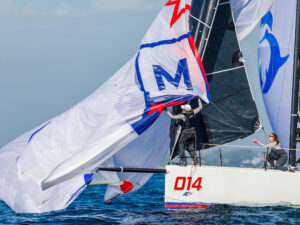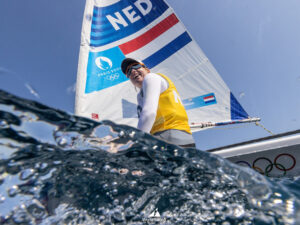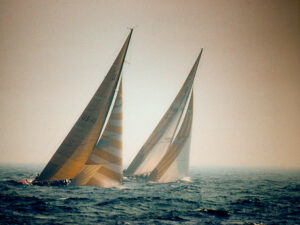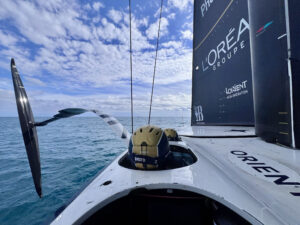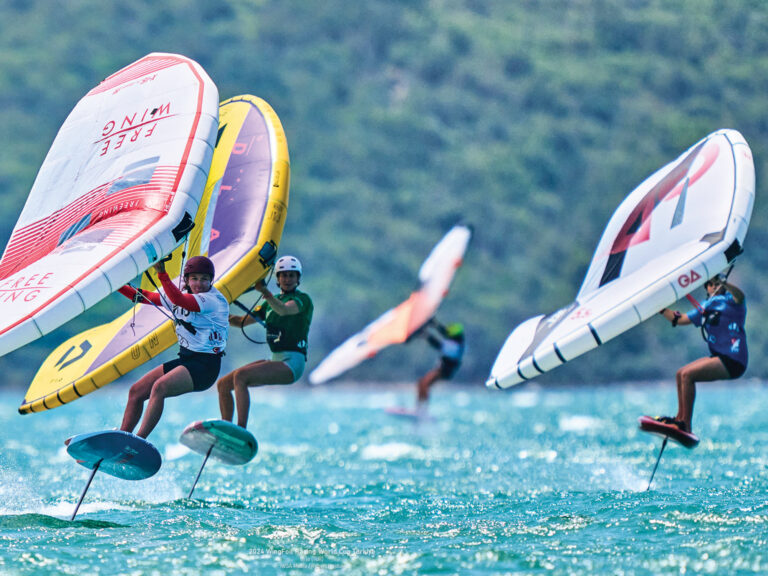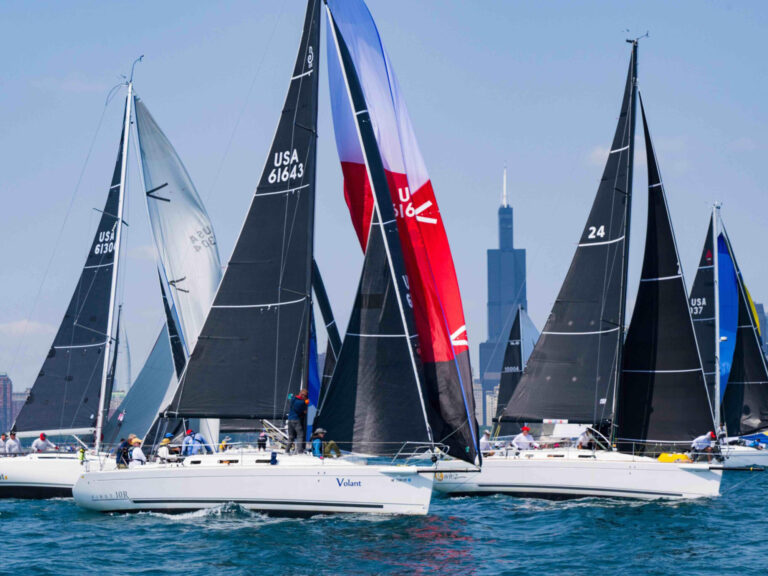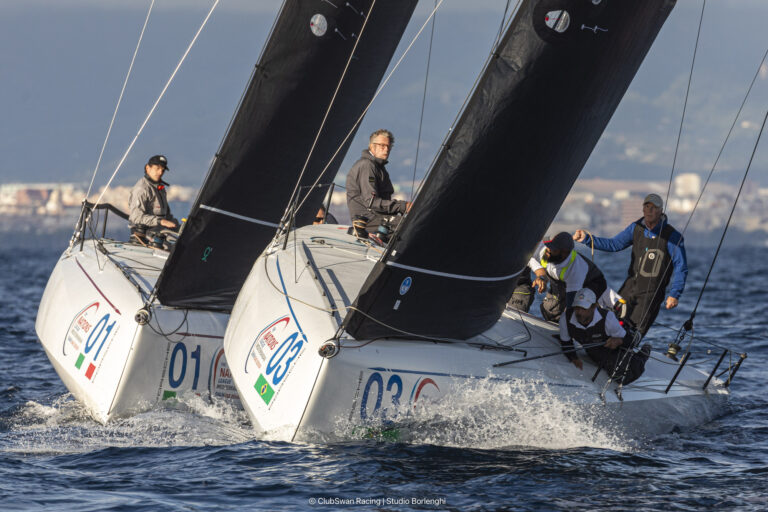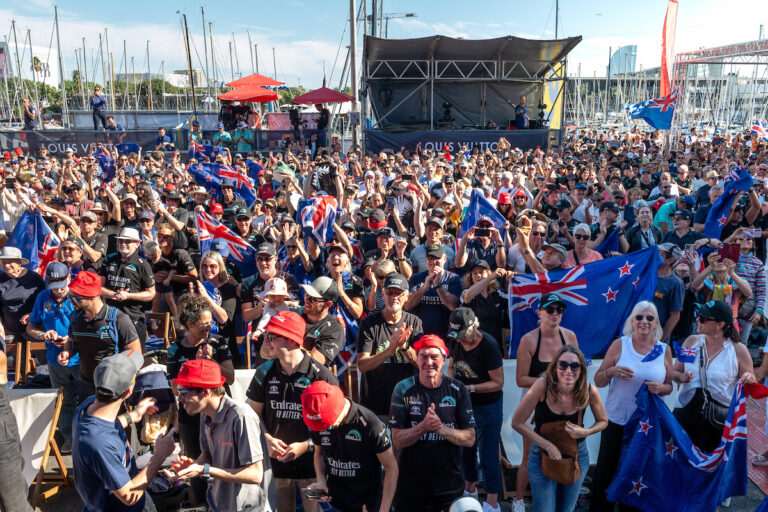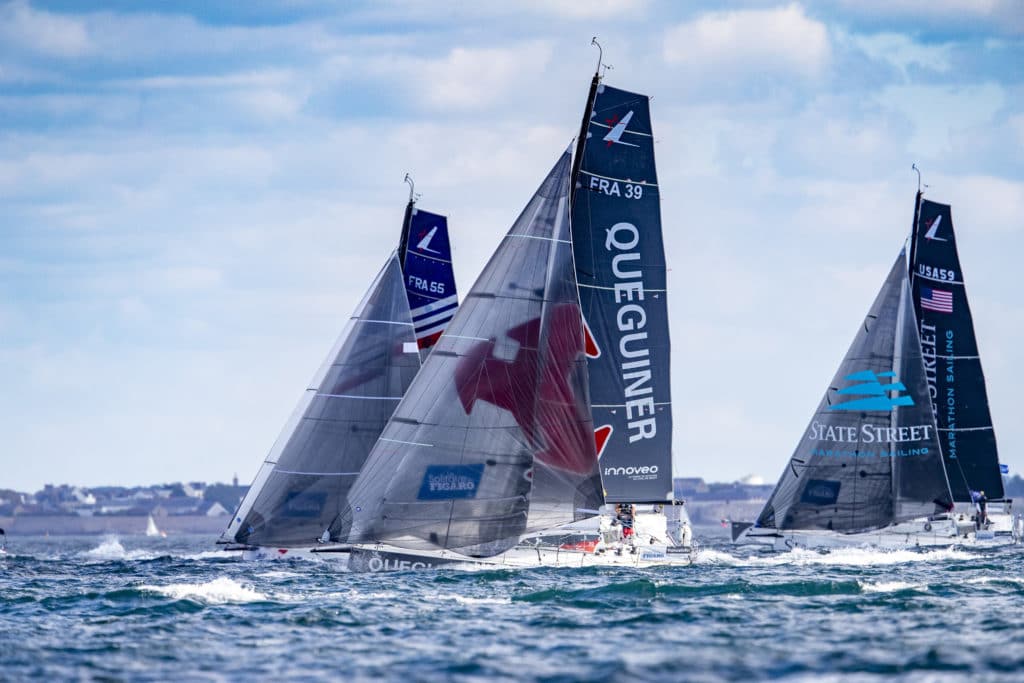
La Solitaire du Figaro Current Tracking
Whilst the fleet returned earlier than anticipated that was no indication of ease, the three-day leg was on one of little sleep. The first competitor to finish, Pierre Quiroga, onboard Macif 2019, finished around 0830 Wednesday morning on September 3. Experienced skipper Alan Roberts, of the United Kingdom, who finished 16th overall despite having held a position within the top ten for most of the leg, won the Vivi Trophy for best international for the Figaro’s second leg.
Upon arriving, he commented on how exhausted he was considering it was a shorter leg. “Another hard leg, only less than three days at sea, but it feels like five, I’m absolutely shattered… blast reaching at night, really fast, averaging 14 to 18 knots with the Code 0, which was really fun but involved a lot of work, really playing the sheets and catching the surf.
“The upwind was really tough actually, I struggled to find speed. I was able to hold on to the fleet, but I really struggled to move forward through the fleet, so that was tough. We did a lot of rock hopping, we really went right into the rocks and there were some pretty sketchy moments there, but that was pretty fun and seeing the coastline was beautiful. It was just fantastic, and the racing is so, so close!”
For skipper Francesca Clapcich, Fearless – State Street Marathon Sailing, it was also a very challenging leg. Operating on little sleep, she felt like a number of small mistakes cost her the position in the middle of the fleet that she initially held for the first half of the race. She arrived at the dock, weather worn and caked in salt.
“I am obviously happy to have arrived at Fécamp all in one piece and with the boat in order but I am also quite angry with myself for how I managed the race. I knew that this stage was going to be very hard and there would be many pitfalls, but unfortunately I couldn’t get into the game!” said Clapcich.
Clapcich had stated at the beginning of the Leg 2 that one of her goals was to try and manage herself and be mindful of resting throughout the leg, but it seems that this might have been a particularly tough goal in this stage. The consensus from the returning skippers was that this leg demanded and extraordinary amount of concentration due to the oft fluctuating conditions.
Clapcich had a strong start, staying in the thick of the racing until her boat speed on the power reach with the Code 0 saw her slipping away from the more experienced skippers at the front on the pack. Unfortunately, in this race, with so many tidal gates and changes to contend with, any boat who didn’t hold onto the front of the pack risked being pushed further behind with the changing currents, which is what Clapcich experienced. “I had a good start and during the early part of the race I was smart enough not to take risks and remain attached to the group. But my reaching speed was not the same as the leaders. I started to lose contact as I approached Rochebonne and I was unable to recover. From then on, I tried to risk a bit to recover, but that only led me to making more mistakes. Raz Blanchard’s tide gate was one of the biggest turning points where I fell far behind with the current against me.”
Still, Clapcich continued to battle hard, trying out different tactical moves to catch up with the fleet throughout the rest of the race. She did manage to close the time gap significantly at various points. As this is a time accumulative race overall, these small gains, even if they don’t change the positioning, they are still very important.
Jesse Fielding, Opportunity – State Street Marathon Sailing, finished in Fécamp at approximately 1800 last Wednesday evening. The skipper had a long upwind battle to the finishing line against the current, which had turned after the first few boats finished. Having now successfully completed one half of the race, Fielding reflected on the team’s progress so far: “Another finish with a long upwind section, which was never going to be easy. On our team, we’re always working to better understand pilot settings, sail settings, performance outlook — to optimize our time on course and to become better at this game, which is being played at the highest level in the world. The Solitaire is clearly an endurance race. We feel that after two legs down with two to go — a proverbial half time, if you will — we’re in the locker rooms, giving ourselves a speech to go back out there, to play the second half harder and better.”
After the fleet finished this second leg early, the longer than usual respite and recovery time ashore in Fécamp is welcome. It’s a good opportunity to look back on the lessons from the first half, reignite, build stamina and look forward to the next leg, which currently is promising to be completely different again, with the wind dropping significantly by the time of the start this Sunday.
“I don’t think we left anything out there,” FieIding said. “I think we learned a lot, and I think we’re going to try and keep doing what we’re doing, which is to keep learning every minute, every hour, of every leg and to keep applying those lessons immediately to performance. We have to keep trying and be proud. We synthesize a bit of information and get a little faster every time. It’s definitely a marathon race, with a huge endurance profile that is just being discovered by us as first-time American competitors. Every day is a chance to learn something new about these boats and how you race them.”
The next stage now underway, takes the fleet of soloists from Fécamp to Roscoff, but crossing the English Channel, sailing to the Bristol Channel and finally point to Roscoff.
Links to the live feed and La Solitaire du Figaro race tracker at openoceanracing.us.

